Courtesy : tourmyindia.com
Stretching from the Himalaya to coast to coast legacy, India with its highly diversified nature is one of the popular eco-tourism destinations in the world. Whether it is the backwaters of Kerala or shifting sand dunes of Thar Desert… the wetlands in the Himalayan region or natural caves in the Khasi and Garo hills, India throughout the decades has been a one stop eco-tourism hub housing a good population of flora and fauna. The country is just not about tracing the historical diorama BUT the pleasure treasure pours when you roam like a nomad to seek the natural panorama. Let’s go for a refreshing journey through some of the best ecotourism destinations in India from this article.
Recommended Tours
 3 Nights / 4 DaysShimoga Nature Tour Karnataka
3 Nights / 4 DaysShimoga Nature Tour Karnataka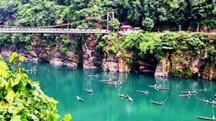 10 Nights / 11 DaysNature’s Best Adventure Tour
10 Nights / 11 DaysNature’s Best Adventure Tour 9 Nights / 10 DaysExotic Kerala Tour Package
9 Nights / 10 DaysExotic Kerala Tour Package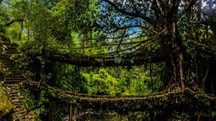 5 Nights / 6 DaysMajestic Touch of North East India
5 Nights / 6 DaysMajestic Touch of North East India
Kerala Backwaters

The backwaters of Kerala have its own charm and life on it is unlike the other destinations in India. Amidst the paddy fields and lush green palm grove these backwaters has its own gentle rhythm hewed out from the rivers which flows down from the Western Ghats to the coast. Enjoy a frolic cruise on the backwaters along the breathtaking vivid contrasts of lush greens and deep blues on the houseboats, known as Kettuvallam which are the cargo boats that once plied in the backwaters to carry heavy cargo such as Rice, Coconut & Spices and also to provide living accommodation for the boatman. These are now changed over to luxurious accommodation for eco friendly travelers.
Where to stay: ATDC Houseboats, Alleppey
Nearest Railhead: Ernakulam Junction railway station, Cochin
Nearest Airport: Cochin International Airport
Also Read
How to Plan a Perfect Holiday Trip to Kerala
Munnar, Kerala
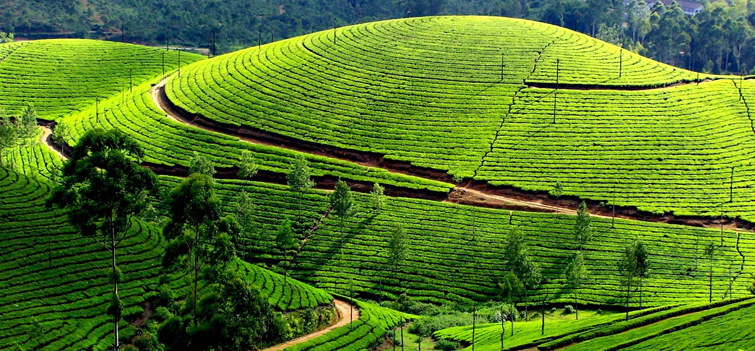
Covered with an extensive layer of forests, grasslands and tea orchards and dotted with several species of exotic flora including the rare Neelakurinji flower, Munnar at an elevation of 1,700 meters is a snug hideout for eco travellers. The small but picture-book hill town in Idukki district in the Western Ghats is home to several protected areas that houses many threatened and endemic species of flora and fauna including the Nilgiri Tahr, Grizzled Giant Squirrel, Nilgiri Wood-pigeon, Elephant, and Gaur amongst the mammals; and Nilgiri Wood Pigeon, Malabar Whistling Thrush, Orange-Crowned Warblers, Nilgiri Pipit, Scarlet Minivet, and Broad-tailed Grassbird amongst the avifauna. If you are travelling to Munnar during the spring and summer seasons you might chance upon the purple-blue hue patches beautifully lying over the lush green bed… that would be a streak of luck though. The gushing streams gutting through the whispering woods and winding lanes cutting through mountains make Munnar one of the popular eco green tourism destinations in India.
Where to stay: Misty Mountain Resort
Nearest Railhead: Ernakulam Junction railway station, Cochin
Nearest Airport: Cochin International Airport
Also Read
100 Interesting Facts You Didn’t Know about Kerala
Thenmala, Kerala

India’s first planned ecotourism destination, Thenmala in Kollam district is majestically set in the midst of evergreen forests in the lap of the Western Ghats and hosts a wide range of adventure and leisure activities for all kind of travellers. Its growing popularity among both domestic and international tourists is due to its unique vistas, bio-diversity and functioning. Forest trails and night camping in the middle of the jungle allows you to snuggle into nature, whereas a peep into the traditional tree house that is used by the forest dwellers turns your leap into the wild more exciting. Thenmala also boosts a lake where one can go for boating, a rope bridge, a musical fountain, and offers many activities like rappelling, rock climbing, and biking. The Thenmala Eco-Tourism is divided into three different zones such as the Culture Zone, where one can spree into savouring various Keralian cuisine; Leisure Zone, where one can go for a refreshing walk almost up to the dam; and Adventure Zone, where one can go for activities like hiking, rapelling, biking and rock climbing.
Where to stay: Apichayan’s Cliff Resort
Nearest Railhead: Thiruvananthapuram
Nearest Aiprort: Thiruvananthapuram Airport
Also Read
Why You Should Visit Kerala in Monsoon Season
Thodupuzha, Kerala
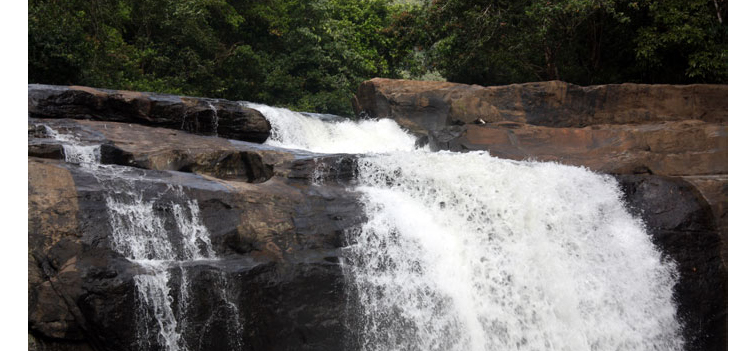
The gateway to the Thommankuthu Waterfalls in Idukki district, Thodupuzha is one of the least explored destinations in India that snug knavishly in the Western Ghats. The seven-step waterfall that was revealed to the world in 1920 by Mr. Thommachen Kuruvinakunnel, a legendary hunter, is one of the major eco-tourism destinations in Kerala. The pleasant surrounding dolled up with an evergreen forest blanketed over the rolling hills and housing several species of avifauna and mammals… squeeze gently in the frame of a perfect eco-tourism holiday.
Where to stay: Vettoms Lakeview Resort
Nearest Railhead: Ernakulam Junction railway station, Cochin
Nearest Airport: Cochin International Airport
Also Read
Do You Know about the Popular Hill Stations of Kerala?
Eravikulam National Park, Kerala
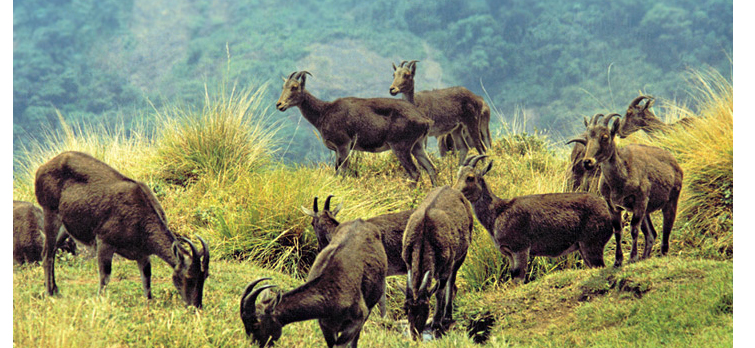
Home to one of the endangered species, Nilgiri Tahr, the Eravikulam National Park that covers an area of 97 square kilometers and ranges from an altitude of 1,200 meters to 2,700 meters is another popular eco-tourism place in Kerala. The park comprises of high altitude grasslands and is crisscrossed by several perennial streams that merge to form the tributaries of the Periyar River, Cauvery River, and Chalakudiyar River. The Lakkom Water Falls on the course of Pampar River is one of the major attractions in Eravikulam National Park. The park is a haven for wildlife enthusiasts as it houses a wide range of animals, birds, insects, amphibians and plants. Further, one can also indulge in activities like forest trails, trekking and wildlife photography.
Where to stay: Tea Valley Resort, Munnar
Nearest Railhead: Ernakulam Junction railway station, Cochin
Nearest Airport: Cochin International Airport
Also Read
16 Popular National Parks & Sanctuaries in Kerala
Periyar National Park, Kerala

Covering a core area of 350 square kilometers, the Periyar National Park that is located in the Cardamom Hills and Pandalam Hills of the southern Western Ghats is one of the most visited national parks in South India. The all-embracing environment turns out to be a paradise for eco-travellers that includes wildlife enthusiast, botanists and nature photographers. The Periyar National Park is notable as an elephant reserve and tiger reserve and also houses several other species of mammals, reptiles, insects, amphibians, and birds. The submerged trees in Periyar Lake are also a treat to the eyes.
Where to Stay: Bamboo Grove Eco-Lodge
Nearest Railhead: Kottayam
Nearest Airport: Madurai Airport
Also Read
Top 15 Wildlife Tourism Places You Must Visit in South India
Kodaikanal, Tamil Nadu

One of the popular weekend getaways in South India, Kodaikanal is graciously set in the Palani Hills, between the Parappar and Gundar Valleys, of the eastward spur of Western Ghats at an approximate altitude of 2,130 meters. Kodaikanal was dotted in the map of India as a summer retreat by the British in 1845 and later due to its propitious location gifted by the forests and grasslands topping the hillsides… it bloomed as one of the major eco-places in India. This mighty hill station in South India is endowed with a nature’s basket comprising the montane rainforests that houses some of the endemic flora and fauna, waterfalls, and perennial streams cutting through the valleys. The Kodaikanal Lake, Bryant Park, Coaker’s Walk, Bear Shola Falls, Silver Cascade, Guna Caves, Dolphin’s Nose, Pillar Rocks, and Berijam Lake are some of the major natural attractions in Kodaikanal. Further, the Palani Wildlife Sanctuary composing a mystical environment tuned up with several waterfalls, namely the Fairy Falls, Neptune Falls, Pambar Falls, Thaliar Falls, Alanthoni Falls, Poombarai Falls, Skamba Falls, and more… is no doubt a haven for naturalists and worth exploring. The proposed Palani Hills Wildlife Sanctuary and National Park, which will be an up gradation and expansion of the Palani Wildlife Sanctuary, will cover an approximate area of 737 square kilometers giving shelter to several threatened species and plant life. The region is mostly inhabited by the Paliyan tribes who are the descendants of the Dravidian people and are famed as traditional nomadic hunter-gatherers, honey hunters and foragers.
Where to stay: Black Band Cottages
Nearest Railhead: Kodai Road
Nearest Airport: Madurai Airport
Also Read
Honeymoon in Kodaikanal- Romance Enveloped in Mist!
Coorg, Karnataka

Home to the Kodava tribe, which is one of the indigenous tribes of India, Coorg is definitely a place of complete bliss, delight and peace that is profusely supplied with plant and animal species. Coorg stretches from an elevation of 900 meters to 1,800 meters and is popular for hosting several spice and coffee plantations. Over the years… Coorg, having vast expanse of elements of nature, has flourished as another eco destinations in India that is located on the western spur of the Western Ghats. It comprises of three wildlife sanctuaries and one national park that includes the Brahmagiri, Talakaveri, and Pushpagiri Wildlife Sanctuaries, and the Nagarhole National Park that is mostly dotted with bamboo, rosewood, teak, sandalwood, silver oak, and spice plants and housing some of the endangered mammals, reptiles, insects and amphibians. Coorg as an eco-region further constitutes several waterfalls and gushing rivers… thus calving one of the leading water sports in India, river rafting, which can be possible in Barapole and Dubare. Other adventure and leisure activities in Coorg include trekking, hiking, rock climbing, boating and angling.
Where to stay: Alpinia Estate Stay
Nearest Railhead: Mysore
Nearest Airport: Mandakalli Airport, Mysore
Nagarhole National Park, Karnataka

Comprising the districts of Coorg and Mysore and covering an approximate area of 644 square kilometers, the Nagarhole National Park is home to some of the endemic animal species like tiger, leopard, and dhole. Other common mammals and reptiles that are spotted are chital, sambar, barking deer, jackal, sloth bear, mongoose, hyena, wild boar, squirrels, vine snake, rat snake, bamboo pit viper, Indian rock python, Indian monitor lizard, and common toad. Amongst the avifauna… darters, oriental white ibis, greater grey headed fish eagle, and red headed vulture are some of the ‘near threatened’ ones, whereas the blue winged parakeet, Malabar grey hornbill, and the white bellied treepie remain the major attractions being rare spotted for wildlife enthusiasts. The Nagarhole National Park, which is a part of the Nilgiri Biosphere Reserve, is also one of the Tiger Reserves in India and together it is under consideration by the UNESCO World Heritage Committee for selection as a World Heritage Site due it is rich biodiversity.
Where to stay: Jungle Inn
Nearest Railhead: Mysore
Nearest Airport: Mandakalli Airport, Mysore
Bandipur National Park, Karnataka
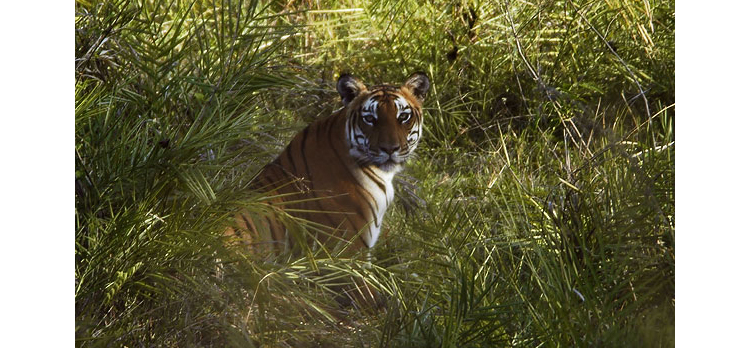
One of the most popular national parks in India and established as a tiger reserve under Project Tiger in 1974, the Bandipur National Park spans over an area of 874 square kilometers and is a part of the Nilgiri Biosphere Reserve. The park comprises of various plant species that include Teak, Rosewood, Sandalwood, Indian-laurel, Indian Kino Tree, Giant Clumping Bamboo, Clumping Bamboo, Indian Gooseberry, Black Myrobalan, Flame of the Forest, Satinwood, Black Cutch, Axlewood, and more. It also gives shelter to a good population of animals including the endangered and vulnerable species like Indian elephants, gaurs, tigers, sloth bears, muggers, Indian rock pythons, four-horned antelopes and dholes AND other commonly spotted mammals and reptiles like chital, langurs, squirrels, pythons, vipers, rat snakes, lizards, Indian pond terrapins, and muggers. The Bandipur National Park is also a fairy tale world where once can also spot more than 100 colourful butterflies and other insects. With such a rich ecology the park makes for a refreshing escape into the wild for eco-tourists and wildlife photographers.
Where to stay: Bandipur Safari Lodge
Nearest Railhead: Mysore
Nearest Airport: Mandakalli Airport, Mysore
Galgibaga Beach, Goa
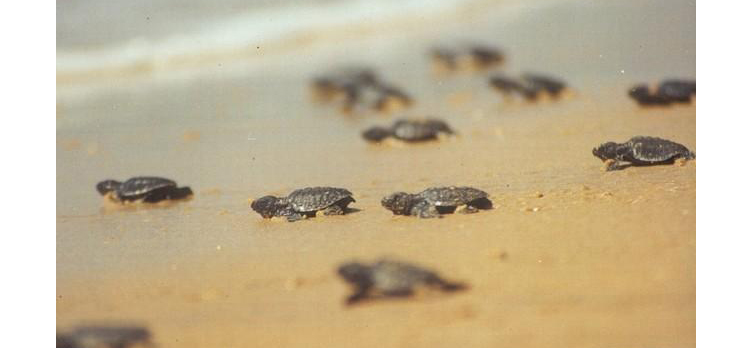
Despite being located in one of the busiest tourist hubs in India, the Galgibaga Beach in Goa still remains the cleanest beach in India and is well known for turtle nestling. Being one of the secluded beaches in India that is close to the popular Palolem Beach resort, the Galgibaga beach is least affected by tourists even during the peak season. Thus it offers you a pleasant getaway where you can dream of an ideal walk over the solitary silver sand dotted with palm trees. If you are travelling during the winter season then you might be lucky to see some Olive Ridley turtle nests/eggs. Because of this ecological factor… the Galgibaga Beach comes under the purview of the forest department.
Where to stay: The Fern Gardenia Resort, Canacona
Nearest Railhead: Madgaon
Nearest Airport: Dabolim Airport
Tyda, Andhra Pradesh

The bountiful nature surrounding this small village of Tyda is virtual and vestal modesty that is secretly set in the Eastern Ghats at an elevation of 700 meters (approximately). It is one of the unexplored places in India and thus springs up as an eco-tourism getaway in India with a rich bed of exotic flora including medicinal and aromatic plants. The region is also home to several endemic animals and birds such as the chital, sambar, Panther, Wolf, Wild Dog, Hyena, Sloth Bear, Gaur, Black Buck, Chinkara, Chowsingha, and Nilgai amongst the mammals AND red-chested pod chards, pintails, herons, egrets, migratory ducks, water birds, pelicans, teals, ibises and storks amongst the bird species. The region also facilitates many activities like camping, forest trails and trekking.
Where to stay: Jungle Bells
Nearest Railhead: Visakhapatnam
Nearest Airport: Visakhapatnam International Airport
Maredumilli, Andhra Pradesh

Another least travelled destination in India, the Maredumilli village in the Eastern Ghats exhibits a rich biodiversity with dense wood and grasslands crisscrossed by several small perennial streams. The region is also home to several tribal communities who in support with the Andhra Pradesh Forest Department actively participate in conserving the eco-tourism project.
Where to stay: Jungle Star Resort
Nearest Railhead: Visakhapatnam
Nearest Airport: Visakhapatnam International Airport
Chilika, Odisha
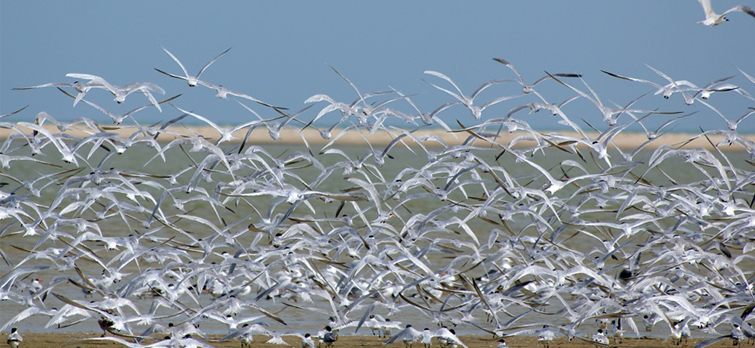
India’s largest coastal lagoon and the world’s second largest… the Chilika Lake and its surrounding environment are home to a number of migratory birds and animal and plant species. The area, covering over 3,500 square kilometers, houses the Irrawaddy Dolphins, green sea turtle, dugong, blackbuck, Spoon billed sandpiper, limbless skink and fishing cat amongst some of the endemic species; Milk fish, Indo-Pacific tarpon, Ten pounder, Bream, Hilsa, and Mullet amongst some of the aqua fauna; Greater and Lesser Flamingos, Goliath Heron, Grey and Purple herons, Egrets, Spoonbills, Storks and Black-headed Ibis amongst some of the migratory birds; and Asiatic Dowitchers, Dalmatian Pelican, Pallas’s Fish-eagles, migrant Spoon-billed Sandpiper and Spot-billed pelican from some of the rarest bird species. The ecosystem dotted with more than 700 species of flowering plants is also a shelter to a large number of mammals, reptiles and other amphibians. The region comprising a group of small islands was declared as a wetland of international importance by the Ramsar Convention and is one of the major eco-tourism destinations in India that encourages the wildlife photographers, bird lovers, and naturalists.
Where to stay: Panthanivas Barkul
Nearest Railhead: Balugaon
Nearest Airport: Biju Patnaik International Airport, Bhubaneshwar
Sundarbans National Park, West Bengal

Home to the world’s largest mangrove forest, the Sundarbans National Park covers an approximate area of 1,330 square kilometers. It is the royal residence of the Bengal tiger and the region with 54 small deltaic islands is also a shelter to a variety of bird, reptile, invertebrate species and amphibians. Some of the endangered species, other than the Royal Bengal Tiger, which are found in the Sundarbans National Park are the Saltwater Crocodile, River Terrapin, Olive Ridley Turtle, Gangetic dolphin, Ground Turtle, Hawks Bill Turtle and Mangrove horseshoe crab. Among the endemic marine mammals… the Bryde’s whale, Humpback whale, Irrawaddy Dolphins, Ganges River Dolphins, and Humpback Dolphins are sparsely found near the coastal area. Many conservational projects are being undertaken by the government to protect the rich biodiversity of Sundarbans National Park, which is one of the best national parks in West Bengal. The park being located at the confluence of many distributaries of the Ganges and Bay of Bengal receives some unique geographical features, mudfalts being one of those features that is largely dependent on tidal currents. The Chargheri Char mudflat in the Sunderbans is open for the tourists, and can be visited during low tide.
Where to stay: Royal Bengal Resort
Nearest Railhead: Howrah and Sealdah
Nearest Airport: Netaji Subhash Chandra Bose International Airport, Kolkata
Khangchendzonga Biosphere Reserve, Sikkim
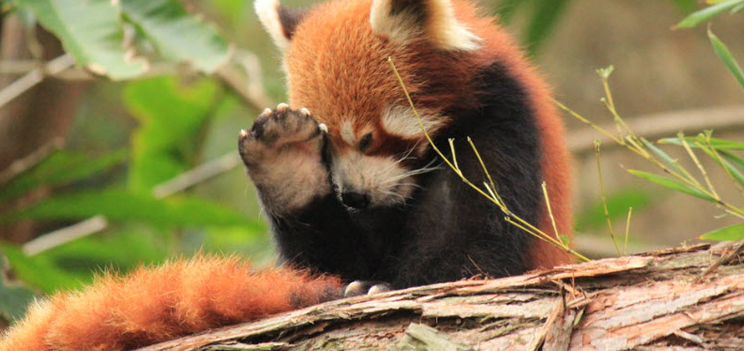
Covering an approximate area of 1,784 square kilometers and ranging from an altitude of about 1,800 meters to 8,500 meters… the Khangchendzonga Biosphere Reserve or Khangchendzonga National Park is one of the high altitude national parks in India and the only national park in Sikkim. It is home to a large variety of alpine vegetations including medicinal plants, animals and birds at different altitude and thus representing a rich ecosystem that also include many glaciers, waterfalls, lakes and streams. Amongst the mammals the snow leopard, Himalayan Tahr, wild dog, Himalayan black bear, red panda, Himalayan blue sheep, serow, goral and takin are the major attractions for wildlife enthusiasts… and birds like Blood Pheasant, Satyr Tragopan, Osprey, Himalayan Griffon, Lammergeier, Tragopan Pheasant, Green Pigeon, Tibetan Snowcock, Snow Pigeon, Impeyan Pheasant, Asian Emerald Cuckoo, Sunbird and Eagle make it a haven for bird lovers. The Khangchendzonga Biosphere Reserve also offers lot of adventure activities like trekking, hiking, and camping… which makes it easier for the travellers to explore the rich biodiversity. The Green Lake Trek and Dzongri Goechala Trek are some of the best alpine treks in Sikkim that passes through the Khangchendzonga Biosphere Reserve.
Where to stay: Red Palace Hotel and Resort, Yuksom
Nearest Railhead: New Jalpaiguri
Nearest Airport: Bagdogra Airport
Also Read
Kaziranga National Park, Assam

A world heritage site that is the home to the Great One-horned rhinoceros, the Kaziranga National Park, covering an approximate area of 430 square kilometers, is one of the best national parks in North East India that features a highly diversified ecosystem. With the influence of the River Brahmaputra and its tributaries… the Kaziranga Park mostly comprises of fertile and alluvial soil and also provides some unique geographical features such as sandbars, beels, and chapories. It houses a good population of mammals, reptiles, insects, amphibians and birds. Among the animals… tigers, leopards, hispid hare, fox, jackals, bears, and more are sighted AND from the bird kingdom… the Great Indian Hornbill and Wreathed Hornbill, Old World babbles, and vultures remain the major attractions. The Kaziranga wildlife sanctuary is also one of the largest homes to reptiles like Reticulated Python, Rock Python, and King Cobra.
Where to stay: Nature Hunt Eco Camp
Nearest Railhead: Guwahati
Nearest Airport: Lokpriya Gopinath Bordoloi International Airport, Guwahati
Majuli, Assam
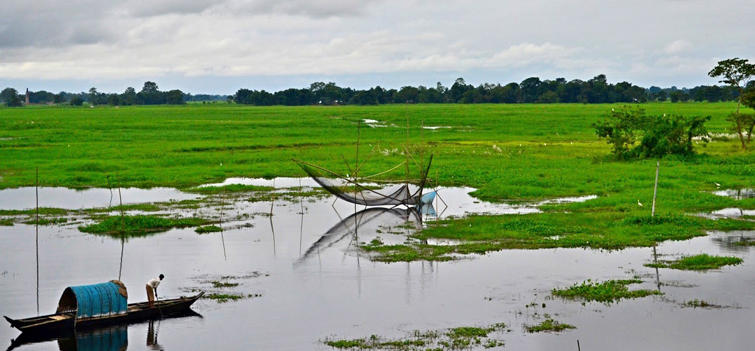
The largest river island in the world that is located in the Brahmaputra River in Assam, Majuli is home to several migratory birds. The island is mostly inhabited by the Deoris, Sonowal Kacharis and Mising tribes. Nonetheless… influenced by the Brahmaputra River, the island comprises a unique ecosystem and preserves a rich agricultural base. The region is also home to a large number of amphibians.
Where to stay: Uttar Kamalabari Satra, Jorhat
Nearest Railhead: Jorhat
Nearest Airport: Jorhat Airport
Mawlynnong, Meghalaya

Located in the East Khasi Hills in Meghalaya, Mawlynnong is considered as Asia’s one of the cleanest villages in the midst of a rich biodiversity. The area surrounding the Mawlynnong village is a basket of abundant natural beauty comprising of an evergreen forest that is a shelter to a large number of animal and bird species, living Root Bridge, waterfalls and natural caves.
Where to stay: Village guesthouses
Nearest Railhead: Guwahati
Nearest Airport: Lokpriya Gopinath Bordoloi International Airport, Guwahati
Jotsoma village in Kohima, Nagaland

One of the remotest villages of India that is located deep in the indigenous territory of Nagaland and close to Kohima… the Jotsoma village is considered as one of the best eco-tourism destinations in North East India that host abundance natural beauty. The village, in the middle of highly diversified eco-system, is mostly inhabited by tribal settlements. The region is an ideal location for birding.
Where to stay: Hotel Japfu, Kohima
Nearest Railhead: Dimapur
Nearest Airport: Dimapur Airport
Namdapha National Park, Arunachal Pradesh
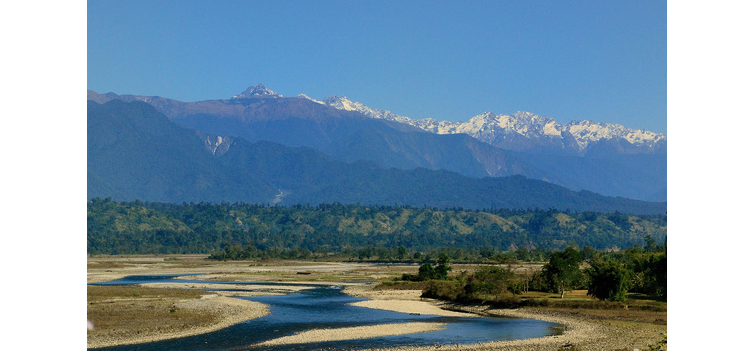
One of the largest national parks in India that covers an approximate area of over 1,985 square kilometers, the Namdapha National Park is widely known for housing four kinds of felines – the common Indian leopard, snow leopard, clouded leopard and tiger. Nonetheless the vast ecosystem comprising of an extensive montane forest and dotted with several species of plants, diversified landscape at different altitude that ranges from an elevation of 500 meter to 4,500 meters… makes it an eco-tourism haven.
Where to stay: Forest rest houses
Nearest Railhead: Tinsukia Railway Station, Assam
Nearest Airport: Dibrugarh Airport, Assam
Also Read
20 Must Visit Destinations in Arunachal Pradesh
Nanda Devi Biosphere Reserve, Uttarakhand

Another UNESCO World Heritage Site because of hosting an extreme and unique biodiversity, the Nanda Devi Biosphere Reserve that constitutes the Valley of Flowers National Park and Nanda Devi National Park… is a travellers’ paradise. Not only because of its high altitude and highly diversified landscape that fascinates trekkers and mountaineers, BUT the vast expanse of forest, dotted with more than 600 species of flowering plants and also medicinal plants and other alpine trees, giving shelter to some of the endemic Himalayan animals and birds… pulls in a large number of wildlife enthusiasts, naturalists, and leisure travellers.
Where to stay: GMVN Tourist Bungalow, Joshimath
Nearest Railhead: Kathgodam Railway Station
Nearest Airport: Jolly Grant Airport, Dehradun
Great Himalayan National Park, Himachal Pradesh

Spreading over an area of 1,170 square kilometers and ranging from an altitude of 1,500 meters to 6,000 meters, the Great Himalayan National Park is home to more than 300 fauna species and numerous plant species. The park because of comprising an extensive exceptional natural beauty and conservation of biological diversity… with alpine meadows, several streams, lakes, glaciers and snow capped peaks has been recently declared as a UNESCO World Heritage Site.
Where to stay: Community Training & Tourist Center, Sairopa
Nearest Railhead: Joginder Nagar Railway Station
Nearest Airport: Kullu Manali Airport or Bhuntar Airport
Also Read
30 Must Visit Tourist Places and Attractions in Himachal Pradesh
Tsomoriri Wetland Conservation Reserve, Ladakh
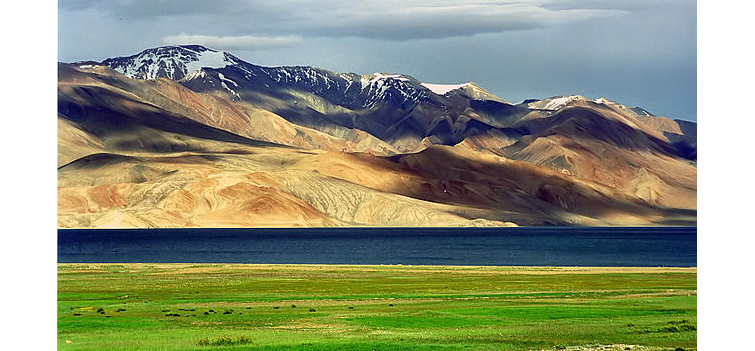
Located at an altitude of 4,595 meters, the Tsomoriri Wetland Conservation Reserve comprises of the Lake Moriri, which is one of the high altitude lakes in India, and its surrounding environment that include the Changthang plateau region. The area is home to some of the endemic alpine animal and bird species including the Tibetan Wolf and Snow Leopard among the mammals, and Black-necked Cranes, Bar-headed Geese, Brown-headed Gulls, Great Crested Grebe, Ferruginous Pochard, Black-necked, and Grebe Podiceps nigricollis among the bird species.
Where to stay: Camping
Nearest Railhead: NA
Nearest Airport: Kushok Bakula Rimpochee Airport, Leh
Also Read
25 Best Places to Visit in Jammu & Kashmir
Ranthambore National Park, Rajasthan

Popular for its tiger population, the Ranthambore National Park that covers an area of 392 square kilometers is another best eco-tourism destination in India having diverse landscape layered by dry deciduous forest. The Ranthambore National Park is home to several animal and bird species that include the tiger, leopard, nilgai, wild boar, sambar, hyena, sloth bear and chital among the mammal species AND Graylag Goose, Woodpeckers, Indian Gray Hornbills, Parakeets, Asian Palm Swift, Dove, Sandpipers, Gulls, Terns, Great Crested Grebe, Eagles, Darters, Cormorants, Flamingos, Ibis, Pelicans, Storks, Pittas, Shrikes, Treepies, and more among the bird species.
Where to stay: Vanya Vilas
Nearest Railhead: Sawai Madhopur
Nearest Airport: Jaipur International Airport
Kanha National Park, Madhya Pradesh

Stretching over an area of 940 square kilometers and comprising of more than 1000 species of flowering plants, the Kanha National Park is home to a significant population of Royal Bengal Tigers, leopards, sloth bears, Barasinghas and Indian wild dogs. Blessed with a vast and rich biodiversity that is covered with grasslands, sal and bamboo forests, and ravines… the Kanha National Park in Madhya Pradesh makes for a refreshing eco-tourism getaway for all travellers’.
Where to stay: Kamp Kamouflage Kanha
Nearest Railhead: Jabalpur
Nearest Airport: Dumna Airport, Jabalpur
Also Read
India Wildlife Travel Deals 2019 – Cherish a Journey in Wilderness
Andaman

The archipelagos of Andaman in the Bay of Bengal are an invigorated treasure trove of exotic flora bedded by verdant and lush green tropical plants. These isles, midst of the lovat green sea, are the best answer to the virtue of nature and remains a tenacious memory flashed with marvelous beaches fringed by the shimmering turquoise and fabulous coral reefs on one side and the call of a cockatoo and your footprints on the sand on the other side. With the canopied forests themselves having an amazing variety of timber, foliage and blooms, the Andaman paduk, the yellow hibiscus, the while lily, the pandanus, the exotic array of orchids, mangrove forest, palms & evergreen creepers are to name but a few of the 650 species of plant life found here, together makes your vacation an exotic one. Enjoy the ocean cruise, snorkeling, scuba diving, water skiing and several other activities while your rove these islands.



